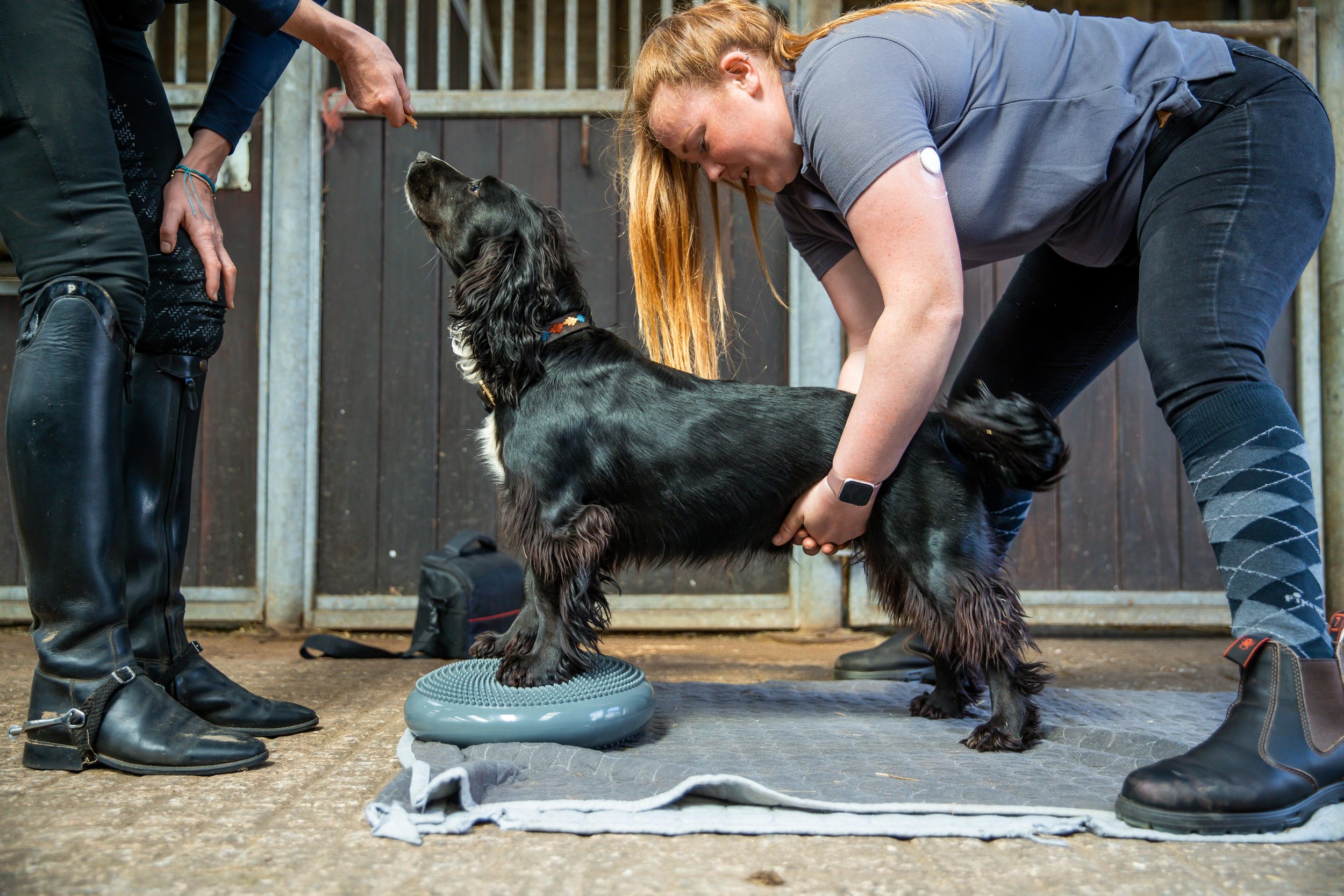
Canine Physiotherapy
Physiotherapy for dogs is designed to improve their mobility, strength, and overall comfort. Whether your dog is recovering from surgery, managing arthritis, or experiencing muscle or joint issues, physiotherapy can help improve their quality of life.
What To Expect
A canine physiotherapy session will take place in your dog’s home and will include a thorough assessment, covering their history, stance, gait, palpation, and range of motion. Depending on the needs of your dog, exercises such as sit-to-stand, lie-to-stand, or circling may be included.
If your dog is nervous, time will be taken to build trust and ensure they are comfortable before the session begins. Findings will be discussed with you before any treatment starts. The session will conclude with a detailed written report and a tailored program designed to benefit your dog. This may include recommendations for changes in their home environment to enhance their comfort.
The goal of the session is to improve your dog’s comfort and quality of life by reducing pain and restoring their physical function to its optimal level.

Common conditions or symptoms treated include osteoarthritis, intervertebral disc disease (IVDD), hip/elbow dysplasia, cruciate ligament injury, patella luxation, neurological conditions, wound healing, post-surgical rehabilitation, soft tissue injuries (tendon, ligament, muscle), performance strength and conditioning, maintenance care, poor performance, elderly dog comfort. difficulty rising, behavioural changes (e.g., becoming more aggressive), slowing down on walks, and consistent licking of a certain area.



